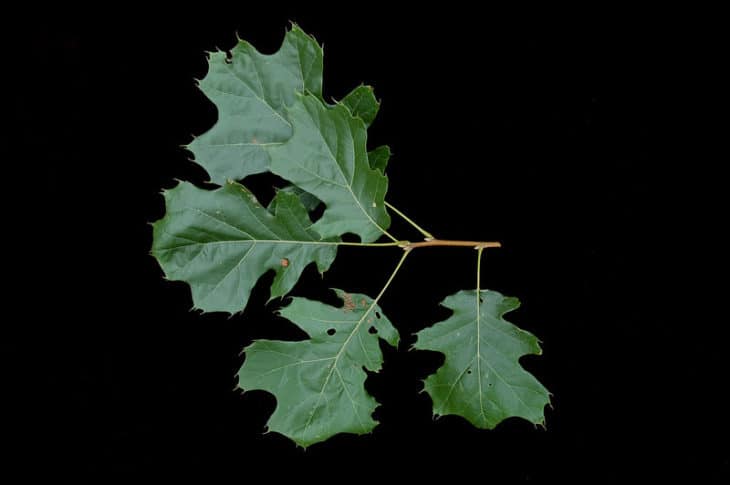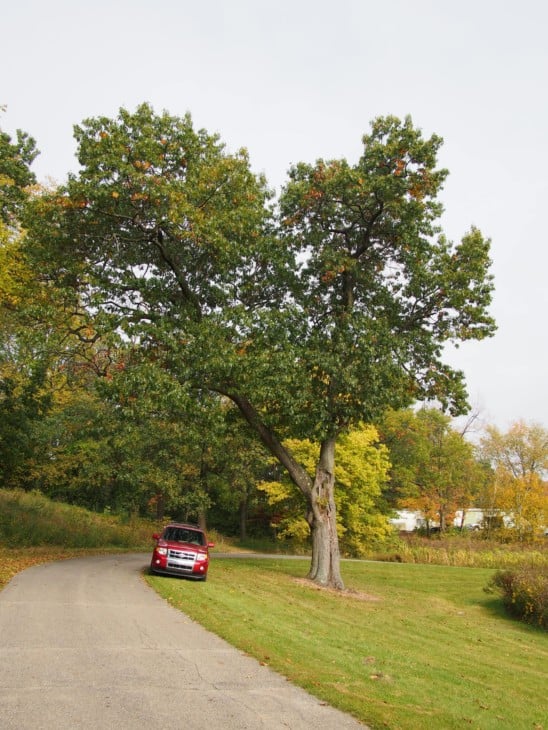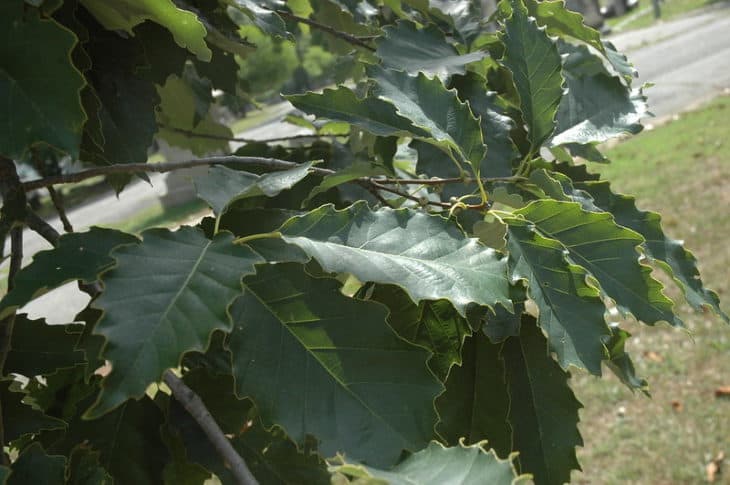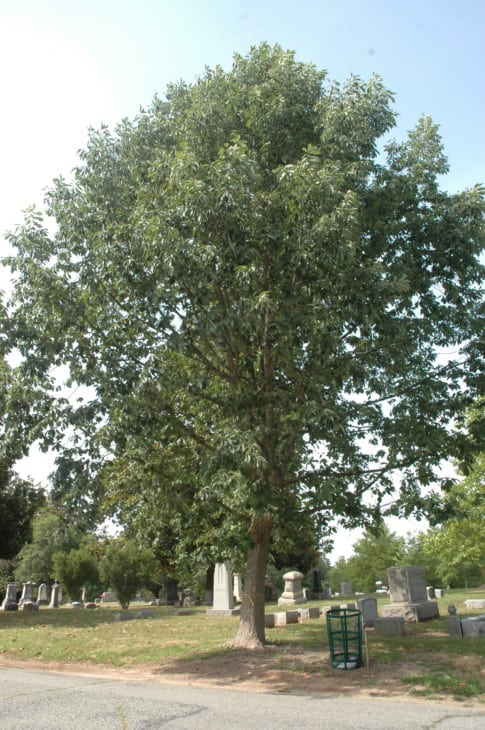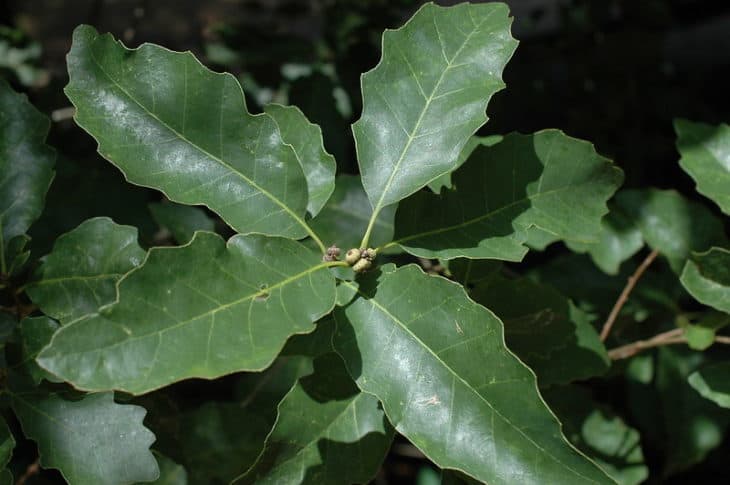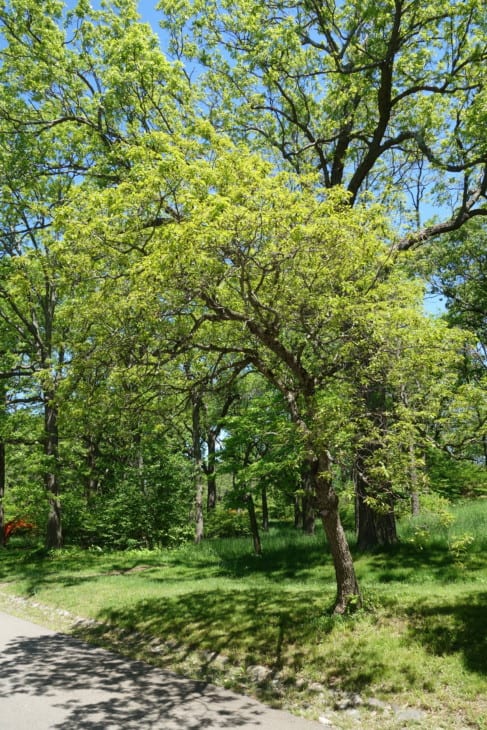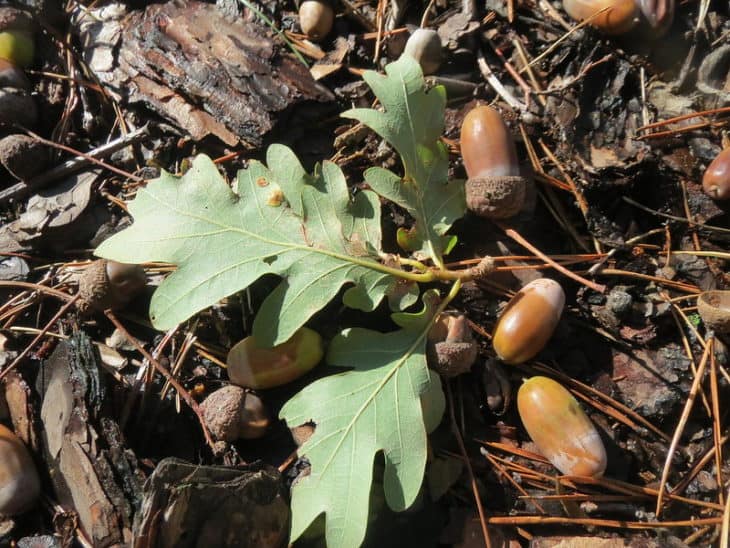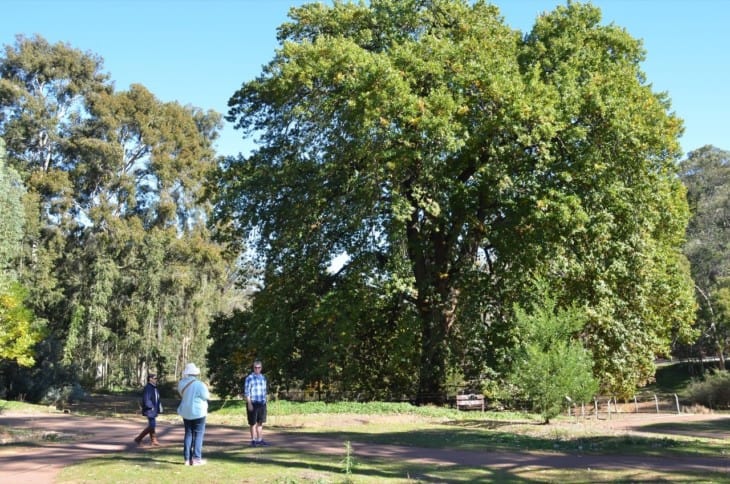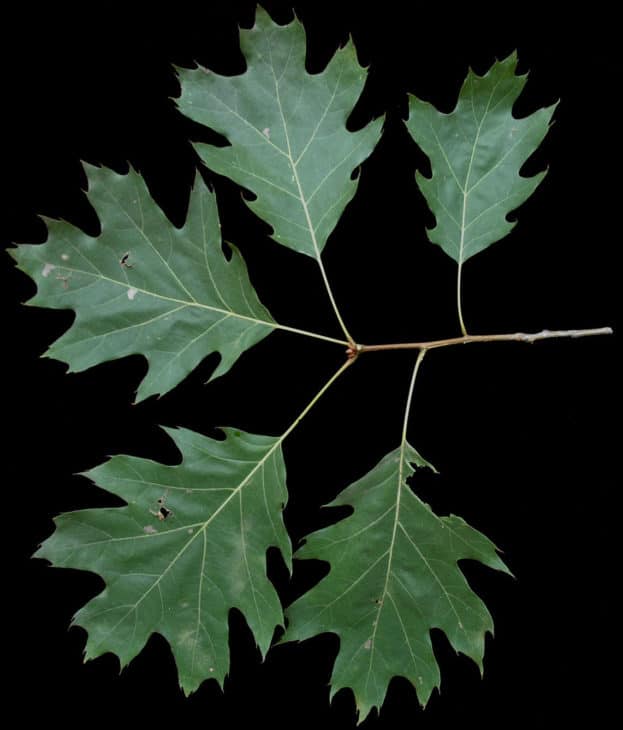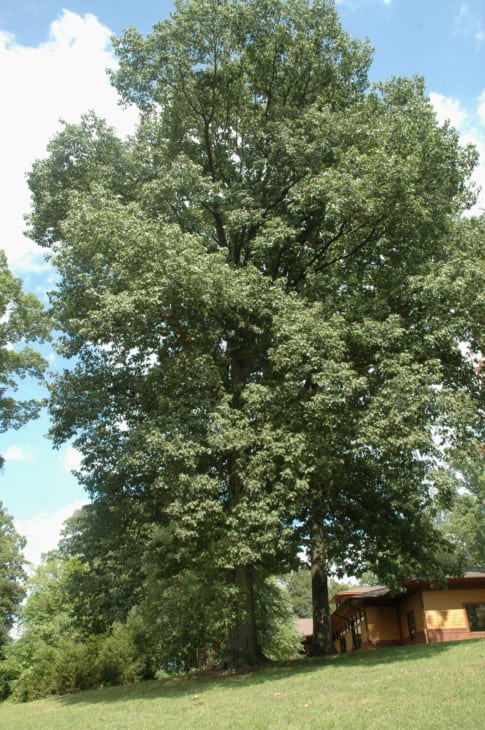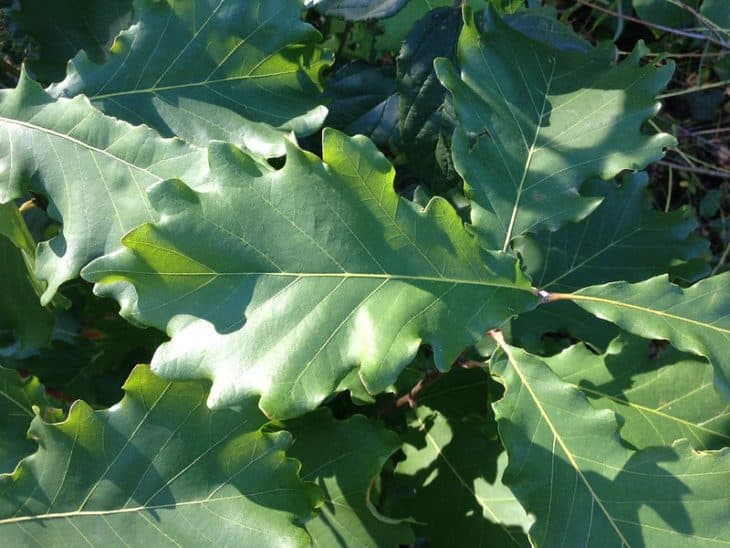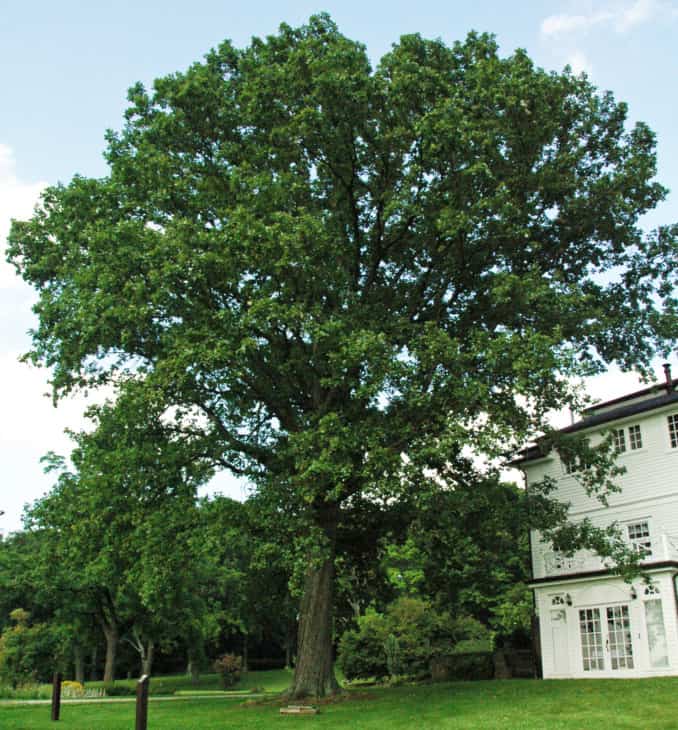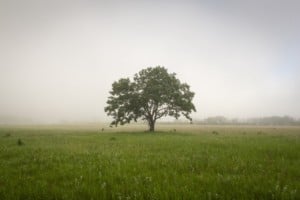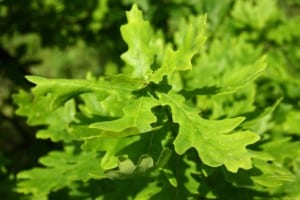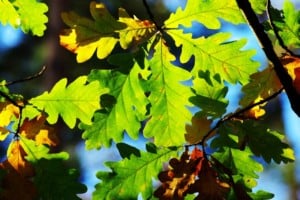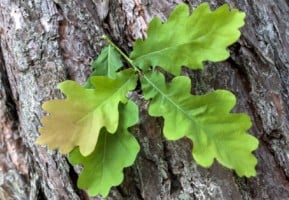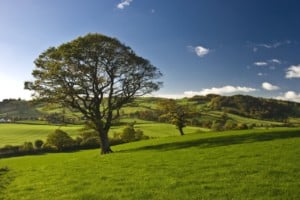Do you plan to grow Oak Trees in your Ontario garden? Oaks are stately, tall, and attractive trees with dark green to dull green, lobed foliage and hard acorns. You can grow these trees as thicket-forming shrubs or elegant, wide-spreading trees. Read on to learn about the types of Oak Trees in Ontario!
Contents
- 1. Black Oak (Quercus Velutina)
- 2. Bur Oak (Quercus Macrocarpa)
- 3. Chinkapin Oak (Quercus Muehlenbergii)
- 4. Dwarf Chinkapin Oak (Quercus Prinoides)
- 5. English Oak (Quercus Robur)
- 6. Hill’s Oak (Quercus Ellipsoidalis)
- 7. Pin Oak (Quercus Palustris)
- 8. Red Oak (Quercus Rubra)
- 9. Swamp White Oak (Quercus Bicolor)
Oak Trees are incredibly durable trees used widely in the timber industry. Manufacturers use Oakwood to make wooden furniture, floorboards, musical instruments, transport vessels, and so much more. Oak Trees belong to the Quercus genus. They are adorned with deciduous and evergreen leaves with varying fall hues. These specimen also grow monoecious flowers and wildlife-attracting acorns.
Dogwood, Hemlock, white Cedar, Pine, Ironwood, Manitoba Maple, Hawthorn, Gray Birch, and more are trees that commonly grow in Ontario, Canada. Moreover, Ontario also has its fair share of many popular Oak species, including Red Oak, Dwarf Chinkapin Oak, and Black Oak. The province enjoys a humid continental climate with three primary climatic regions with warm to hot, humid summers, and cold winters. Southern Ontario, in particular, enjoys humid, warm summers and short, cold winters.
Additionally, the terrain in Ontario is diverse with varying landscapes, including the mineral-rich Canadian Shield, the grassy lowlands of the north, and the fertile farmlands. Due to the diverse landscape and the presence of rich, moist soils in almost all parts of Ontario, you can easily grow Oak species in the province. However, don’t expect your tree to bear acorns in the first few years. Most Oak species take around 20 years to start bearing prolific acorns crops.
Here are the types of Oak Trees in Ontario that you can grow in your garden:
1. Black Oak (Quercus Velutina)
Black Oak is a pretty and unique Oak Tree with an unusual black-colored bark. This tree has a globular, spreading crown. It grows up to a mature height of 50 to 60 feet. Black Oak leaves are deciduous, leathery, shiny dark green, lobed, and bristle-edged. They develop dull red, yellow, and yellowish0brown hues in autumn. This tree also yields insignificant, green, monoecious flowers and elliptic acorns. Black Oak grows well in organically rich, free-draining, moist soils in sunlit spaces.
2. Bur Oak (Quercus Macrocarpa)
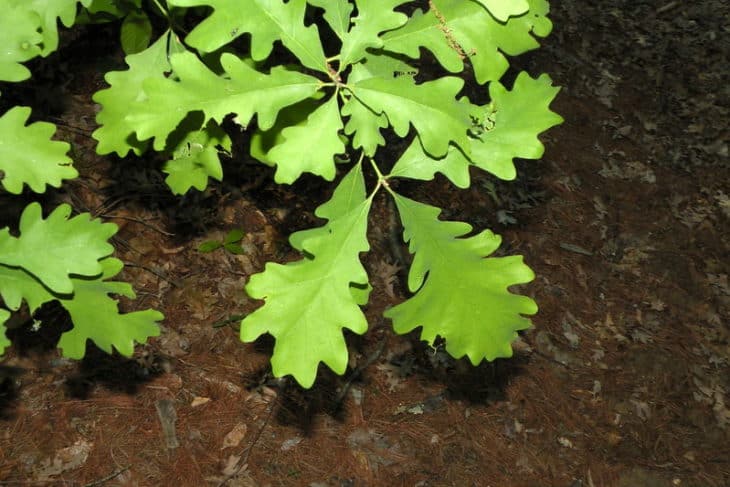
Bur Oak is an eastern American native. This tall and stately tree is also popularly known as Mossy-Cup Oak Tree, thanks to its oval or rounded acorns that feature scaly, fringed, and mossy cups. This deciduous specimen grows up to a height of 70 to 80 feet and has an equally wide, rounded crown. It grows greenish-yellow, insignificant, monoecious blossoms. Bur Oak leaves are lobed, leathery, dark green. They develop a yellowish-brow hue in fall. This tree thrives in sunlit spaces in free-draining, wet/moist soils.
3. Chinkapin Oak (Quercus Muehlenbergii)
Chinkapin Oak is a northeastern Mexican and New English species. This ornamental tree has a mature height of 40 to 60 feet and an open, globular crown. Chinkapin Oak leaves are deciduous, shiny, narrow, green, and crease-edged. They can also be lanceolate or oblong. The foliage turns yellow and brown in fall. This tree grows monoecious, insignificant, greenish-yellow spring flowers that give way to oval acorns with scaly cups. Chinkapin Oak thrives in free-draining, fertile, moist, loamy soils in sunlit areas.
4. Dwarf Chinkapin Oak (Quercus Prinoides)
Dwarf Chinkapin Oak is a narrow shrub-like tree that you can grow into a wide shrub with a height of 12 feet. Alternatively, you can grow it as a small tree with a height of 20 feet and a narrow and stout crown. Dwarf Chinkapin Oak has an irregular or ovoid crown. Its leaves are obovate, lobed, broadly elliptic, green or greenish-yellow, and pinnate with hairy, greenish-gray undersides. This tree grows monoecious, insignificant blooms and ovoid, tan-hued acorns. It thrives in sandy or loamy soils in sunlit spaces.
5. English Oak (Quercus Robur)
Originally from the British Isles, English Oak gained popularity in North America in the 1600s. Since then, this 4o to 70 feet tall and wide-spreading tree has been widely planted in the US. English Oak has a rounded form and irregularly lobed, green leaves with ears at their base. It also features long and skinny acorns that are an important wildlife food source. This tree thrives in loamy, moist soils and full sun but can grow in various conditions.
6. Hill’s Oak (Quercus Ellipsoidalis)
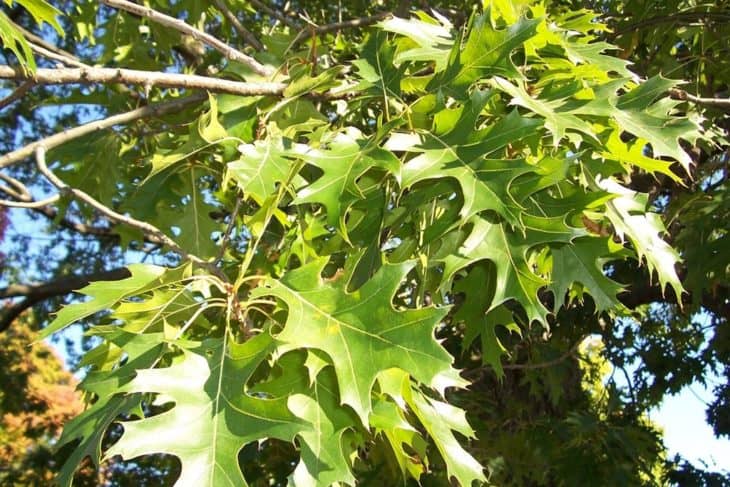
Hill’s Oak is a northern United States native. It’s quite similar to Pink Oak but less susceptible to iron chlorosis. It thrives in well-drained, medium to dry soils in full sun. Hill’s Oak grows up to a mature height of 40 to 50 feet and a wide-spreading crown of 35 to 40 feet. It features dark green, lobed, leathery leaves that turn a gorgeous russet red in autumn. This Oak s an excellent source of food and cover for birds and wildlife.
7. Pin Oak (Quercus Palustris)
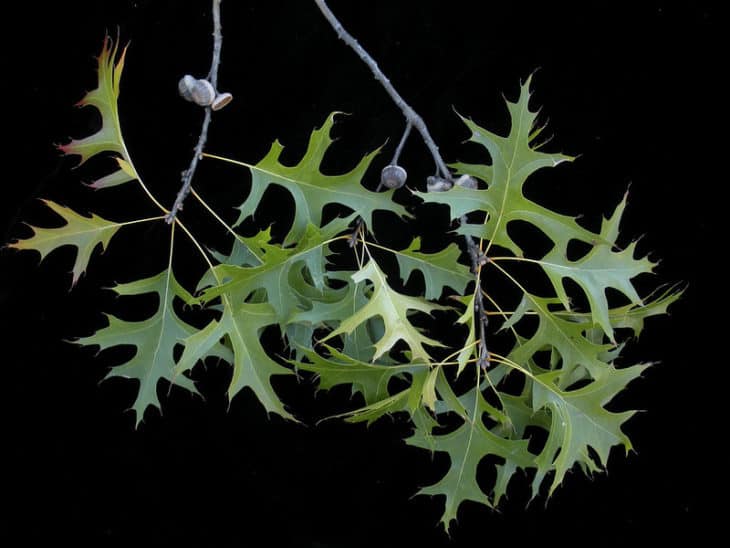
Pin Oak is a tall and stately Oak variety grown popularly in the US and Canada. This tree features deep red autumn foliage. The leaves are deciduous, glossy, lobed, and dark green. Pink Oak grows to a mature height of 50 to 70 feet tall. It grows insignificant, monoecious, green blooms followed by rounded or oval-shaped acorns with saucer-type cups. The branches of this tree grow horizontally and vertically in both directions. Pink Oak grows well in sunlit spaces in acidic, moist, free-draining loams.
8. Red Oak (Quercus Rubra)
Red Oak is inarguably one of the most widely planted Oaks in the US and Canada. It’s known as Red Oak due to its reddish fall foliage. This wide-spreading tree has a mature height of 50 to 70 feet. It features a broad, irregular crown. Red Oak leaves are lobed, lustrous, dark green, and sharp-edged. This tree grows insignificant, monoecism blossoms and rounded, wildlife-attracting acorns with saucer-shaped cups. Red Oak is a durable specimen that thrives in sunlit spaces in acidic, fertile, free-draining, moist soils.
9. Swamp White Oak (Quercus Bicolor)
If you’re looking for a drought-resistant Oak, Swamp White Oak is an excellent choice. This wide-spreading, deciduous tree grows up to a mature height of 50 to 60 feet. It thrives in sunlit sites in free-draining, acidic, wet soils. Swamp White Oak has a rounded crown and a stout trunk. Its leaves are dark green, shiny, and blunt-edged with silver-white undersides. They turn yellow and reddish-brown in fall. This tree yields non-showy blooms and acorns.


